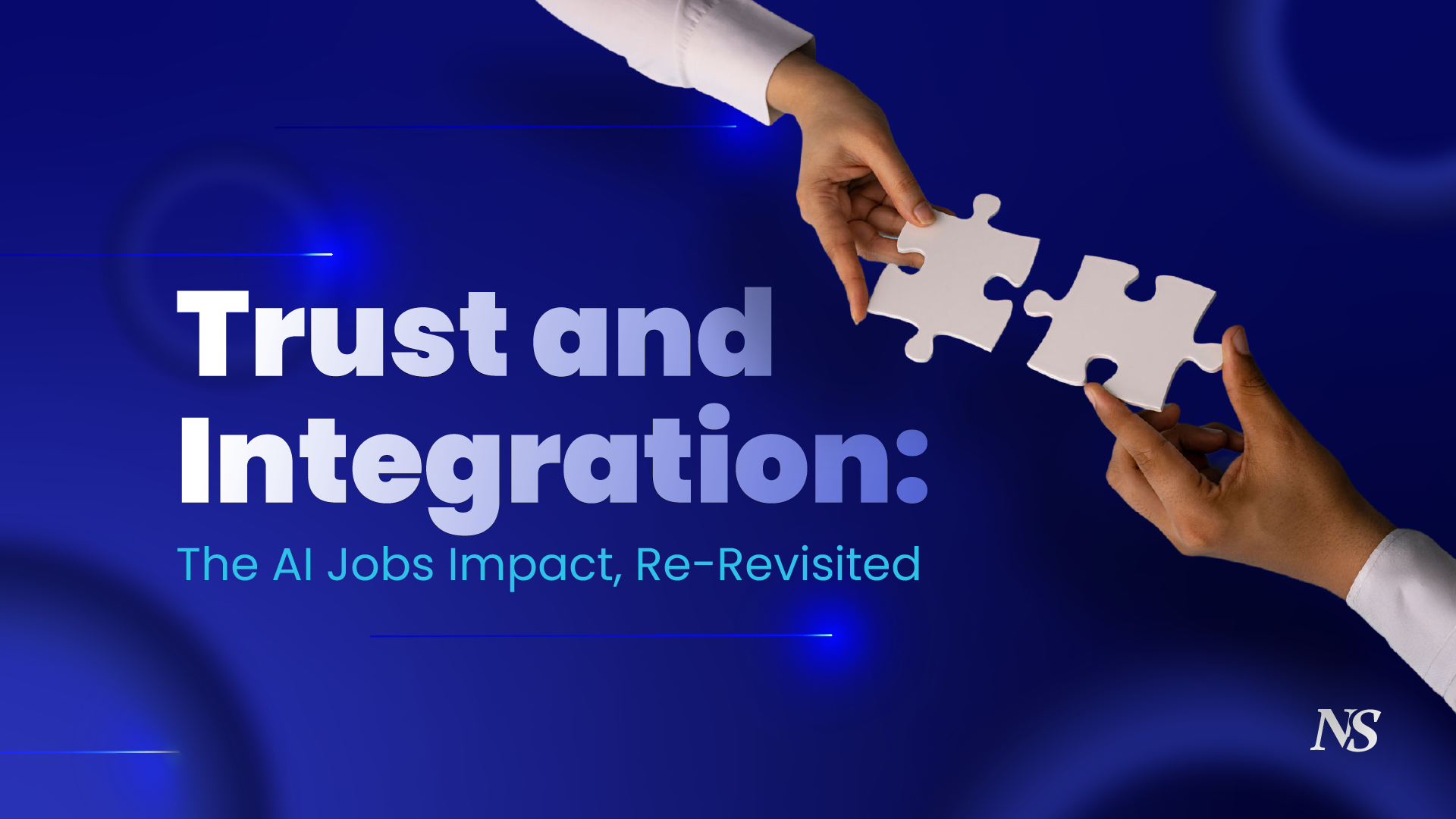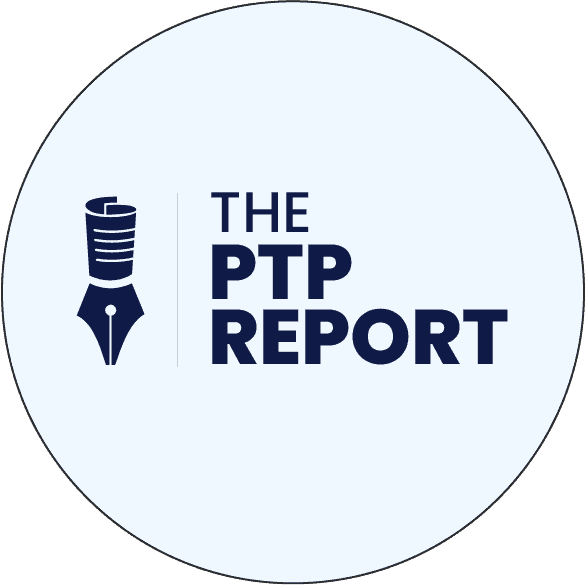It’s a topic that just doesn’t stop churning: AI’s impact on jobs. I’ve written about it twice already—largely making predictions. The most recent one is here.
So why am I back on this again?
On Tuesday, CEO Andy Jassy publicly shared a memo sent to Amazon employees, wherein he wrote in plain and direct terms that AI will be leading to a reduction of their total workforce.
This follows similar thoughts being discussed almost everywhere and posted publicly in recent months by the CEOs of companies like LinkedIn, Fiverr, and Anthropic.
AI is coming for white collar jobs, and it’s starting at the bottom.
This has been coming since even before ChatGPT exploded on the scene two and a half years ago, but today we’re seeing the results of practical, effective AI in its early phases.
In this newsletter, I want to cover updates first—the facts, trends, and early evidence of AI’s impact on jobs—then talk about new jobs that are being created, what people can do to safeguard their jobs (and actually maybe make them better), and finally things I believe companies should also be doing to ensure they’re not causing both themselves, and their workforce, more pain in the long run.
Like it or not, the AI transformation is here.
So, what are you going to do with it?
The AI Workforce Transformation Currently Underway
CEOs Speak: Their View on the Impact of AI in the Workplace
I led with Amazon CEO’s Andy Jassy’s open letter, which profiles the future they envision with generative AI. In addition to touting the many benefits it is providing for customers (shopping features, Alexa+, extensive AWS capacities), he also wrote about internal uses, from improved warehousing and shipping to customer service to advertising.
Amazon already has 1,000 generative AI services either built or in progress, and this, he wrote, is just a tiny fraction of where they’re going in coming months.
AI agents at Amazon are transforming how things get done, which will make them more effective, he believes, and enable them to launch “almost everything from a more advanced starting point.”
But these efficiency gains will mean a reduced workforce. To his employees, he wrote:
“Those who embrace this change, become conversant in AI, help us build and improve our AI capabilities internally and deliver for customers, will be well-positioned to have high impact and help us reinvent the company.”
And those who do not, it was implied, should consider looking for other work.
This follows a steady stream of similar announcements coming from the C-suites of companies across industries in recent months.
The AI-First strategy, which has been in use for over a year at companies like Google and McKinsey to refer to the technology’s importance to operations, is now seeing wider, and more aggressive use in recent months.
Companies like Duolingo and Shopify have discussed this strategy in terms of hiring or existing contract labor, such as requiring that AI be first ruled out as a potential solution before posting new job listings.
Anthropic’s Dario Amodei accompanied the rollout of their new Claude 4 models with a sharp warning about AI and white-collar automation—saying that he believes it could wipe out half of all entry-level positions and cause a spike in unemployment overall.
Of course, Amodei’s timing is not to be ignored—discussing the incredible competence of Anthropic’s newest model no doubt helps drive up sales—but around the same time, LinkedIn’s CEO, Aneesh Raman, also wrote an opinion piece in The New York Times declaring his concern that the bottom of the career ladder may be being lopped off by AI.
Some Facts and Figures: AI Replacing Entry-Level Jobs
Raman points out that:
- Unemployment for college grads has risen 30% since September 2022
- LinkedIn’s Workforce Confidence Index is hitting new lows
- Gen Z workers are the most pessimistic about their futures of any age group
- Of executives surveyed on LinkedIn, 63% agree AI will take on entry-level tasks
For new college grads aged 22 to 27, unemployment (5.3%) is well higher than the national average (4.2%), according to Oxford Economics.
Even ignoring the spike in unemployment over the COVID period, this is a historically significant trend, as the national level typically sits well above that of new graduates.
Among IT professionals in May, the unemployment rate was also higher than it had been, and higher than the national average, according to Janco, rising sharply early in 2025.
Still, economists are not certain this is due to AI, and ZipRecruiter statistics, for example, find summer internships finally returning to the levels they’d reached before the pandemic.
Entry-Level Jobs and AI: The Cost Factor
Speaking of internships, at this year’s Snowflake Summit, Sam Altman compared the state of current AI tools to interns, saying that he believes the next phase will be for AI agents to function like experienced workers.
And already, AI is arguably quite cheap when compared to human labor for what it can accomplish.
As Wired’s Paresh Dave points out, AI prices are being kept low both by stiff competition among the providers and a desire for mass adoption in this gold rush era of AI at work.
One AI entrepreneur, Loti AI’s Luke Arrigoni, suggested that AI could already write better code (at $120 a year) than he could when he first started out (at $63K). And while he has prioritized hiring junior engineers at his own company, he understands why those under financial pressure are being tempted to hire less entry-level coders with the help of AI.
But with more adoption and dependency from companies, will AI prices go up? There’s no clear answer there, barring power shortages or added fines and fees, but even after this initial phase, they seem unlikely to adjust to the cost of human talent for similar tasks.
Of course, there’s a very significant (and sneaky) gap still missing in AI capabilities (see below).
Reaching for Radical Abundance
Increasingly, the AI companies themselves are being more open about the goal of mass automation. With a need to turn profits, coding has become one common area of focus, while startups like Mechanize, as profiled by The New York Times, make no bones about trying to automate everything they can.
“Our goal is to fully automate work,” one of their founders, Tamay Besiroglu, told Kevin Roose, “As fast as possible.”
With a focus on reinforcement learning, they are creating entire training environments for models with the goal of moving AI systems past mastery of just isolated tasks.
When asked about the potential impact on workers, their answer (which was similar to responses from Google DeepMind’s Demis Hassabis, for example) is that AI will enable such an abundance that unemployment will not be a concern.
And while this may be true, there are fewer answers for how such abundance will be shared, and how many years from now.
Anthropic’s Dario Amodei has complained that the heads of other AI companies are “sugar coating” the reality of work disruptions coming from AI and suggests this is one reason it must be discussed now.
In one respect, I agree with him: everyone should be talking about the skills needed in the age of AI.
But overall, this may include a fair bit of optimism, at least on the part of AI capacities (if not on the state of employment). For example, Amodei has said that he believes 90% of new code will be written by AI within just three to six months.
Securing the Future of Work with AI
These are some scary words and numbers, and, if you’re a new graduate, no doubt they look like disconcerting trends.
And I report them not for fearmongering, but instead because I believe work is changing right now. I see it myself and have been amazed by what AI can do.
At the same time, I believe this is truly a transition, as I’ve written before, and that people are still (and will continue to be) desperately needed in the workforce, in the right positions, and with the right skills.
It used to be said in the technical fields that for workers, the importance of your relative skillsets was 75/25 when it came to technical vs soft skills.
Today I see this trend reversing fast. And while it may not yet be 25/75, soft skills are certainly far more important and becoming more so every month.
LinkedIn’s CEO Aneesh Raman told Robert Capps that their own data shows 70% of the skills in the average job will be changed by 2030.
If that pans out, it will be a striking and profound shift. But perhaps not an altogether negative one.
Tasks vs Jobs: Future-Proofing your Career
I believe AI is taking over some entry-level positions, even in cases where it should not be, because it is proving successful at mastering only certain parts of work.
It is an enormous boost to efficiencies for exactly this reason—for things that are being monitored or double-checked anyway (again, as entry-level work often is), AI can be faster and even more effective.
But the problem is that jobs in the real world are far more than just an accumulation of tasks, and sometimes this isn’t immediately clear in the data.
Ultimately, having a job includes being responsible for the work that is done. And this is something that AI cannot provide.
Skillfully harnessing automation and being capable of its effective management is among the skills most needed in the age of AI, for most white-collar positions.
Some companies who are thinking about freezing hiring for entry-level are still hiring inexperienced workers provided they are capable of using AI effectively to bridge their knowledge gaps.
AI is an excellent leveler, and if you’re not using it now to make your job more effective and efficient, you are putting yourself in jeopardy, like it or not.
Many companies don’t want to replace staff but are also feeling intense pressure and running into resistance from understandably AI-averse workers.
This is a challenge for all sides, as AI, despite mastering tasks, still desperately needs human handling.
We see this so clearly in software engineering, where vibe coding is getting better and better, but it is still a surprisingly long way from the destination of being a complete, enterprise-level software developer.
Democratization: Is Software Engineering like Ride Sharing?
MIT economist David Autor studies the impact of technology on employment and has long proposed that AI will render some jobs—like transcribers and file clerks for example—obsolete while also creating entirely new ones.
In the field of software engineering, we see tasks being automated effectively, but there remains a significant gap in terms of consistency, security, and integration.
Still, vibe coding may shift the way we think about some aspects of software development. In a world of vibe coding where more and more people can create entry-level code effectively, there could be far more developers out there.
Steve Yegge, a software engineer who’s worked at Google and AWS, told Wired’s Will Knight that he was converted from a skeptic into a believer, believing now that if you’re not taking advantage of vibe coding, you’re “just walking in a race.”
But at the same time, he stresses that AI assistance only goes so far, and that these systems must be watched carefully. Generative AI does not do rote repetition by nature and must be supervised “like toddlers” in this arena.
New Jobs Created by AI
In other words, we need skilled AI babysitters. And that need is not going away anytime soon.
With the World Economic Forum famously predicting that AI will eliminate millions of jobs but create still more, what will these positions be like?
An excellent article ran in The New York Times this week by Robert Capps considering this very topic.
I won’t repeat the contents here, suffice to say that babysitting, or working for trust and integration in AI, is high on his list.
AI work must be reviewed for inconsistencies, as it both dazzles and confounds, and even if it continues to get more reliable, this need remains for regulated areas like healthcare and the financial industry, not to mention ensuring ethical and responsible outputs.
Companies also need humans to guarantee consistency in quality, which is one reason why AI does best at tasks that are already getting double checked.
At PTP, we have a lot of experience with AI implementation, whether it’s for automated software testing or our own use in recruiting, development, and customer service.
From everything I’ve seen, I believe integration will remain an essential human position for the foreseeable future.
This means being a technical bridge between organizations and AI, repairing and managing systems, and evaluating new developments and emerging systems.
Overall, critical thinking is more important than ever.
One reason designers haven’t vanished despite AI’s capacity to whip up ready artwork in minutes, is that we still need people with the vision to see big pictures, to understand how things go together, ask for them the right way, and evaluate the results.
This ties in with communication—being able to suss out what’s really needed and what resonates with others, too.
AI is nowhere near providing these capacities.
Conclusion: AI and the Talent Pipeline
The workplace change is underway, but we’re a long way from radical abundance. At least of the kind dangled by AI pioneers.
So, in the meantime, how do we take advantage of all the wonderful things AI has to offer, make leaner, more effective businesses, and still maintain our talent and leadership pipeline?
How do we ensure we’re not painting ourselves into a corner by losing the ongoing instruction and experience we need to create new high-level developers, for example?
Some believe we need a complete re-design of entry-level work. What it is, what we expect from it, and how people should prepare for it.
One example posted by LinkedIn’s Aneesh Raman comes from the consulting firm KPMG, where recent grads are using AI to handle assignments that used to only go to those with several years of experience.
And on the side of new graduates, there’s evidence that the willingness is already there: among Gen Z job candidates, 40% said they’d switch jobs or even take a pay cut if it meant being given more chance to advance in their work.
I’ve encouraged companies to harness workplace innovation for AI use, through such activities as hackathon projects and knowledge sharing, and I continue to believe these are better ways to get employee buy-in than forced efficiency metrics or layoff scares.
The future is here. It’s up to us to ensure it’s the brighter, more fulfilling world that it can be.
References
Message from CEO Andy Jassy: Some thoughts on Generative AI, Amazon
Behind the Curtain: A white-collar bloodbath, Axios
Is Your AI-First Strategy Causing More Problems Than It’s Solving?, Harvard Business Review
Vibe Coding Is Coming for Engineering Jobs, and Cheap AI Tools May Come at a Big Long-Term Cost, Wired
Anthropic CEO Dario Amodei Predicts Half of All Entry-Level Office Jobs Will Disappear, Inc.
For Some Recent Graduates, the A.I. Job Apocalypse May Already Be Here, A.I. Might Take Your Job. Here Are 22 New Ones It Could Give You., and This A.I. Company Wants to Take Your Job, The New York Times
The labor market is worse than it appears, Yahoo Finance





